How Often To Water An Aloe Vera Plant – For Lush, Healthy Growth
Watering aloe vera plants is a delicate balance. Discover how to ensure your plant gets just the right amount of moisture – including the best watering methods.
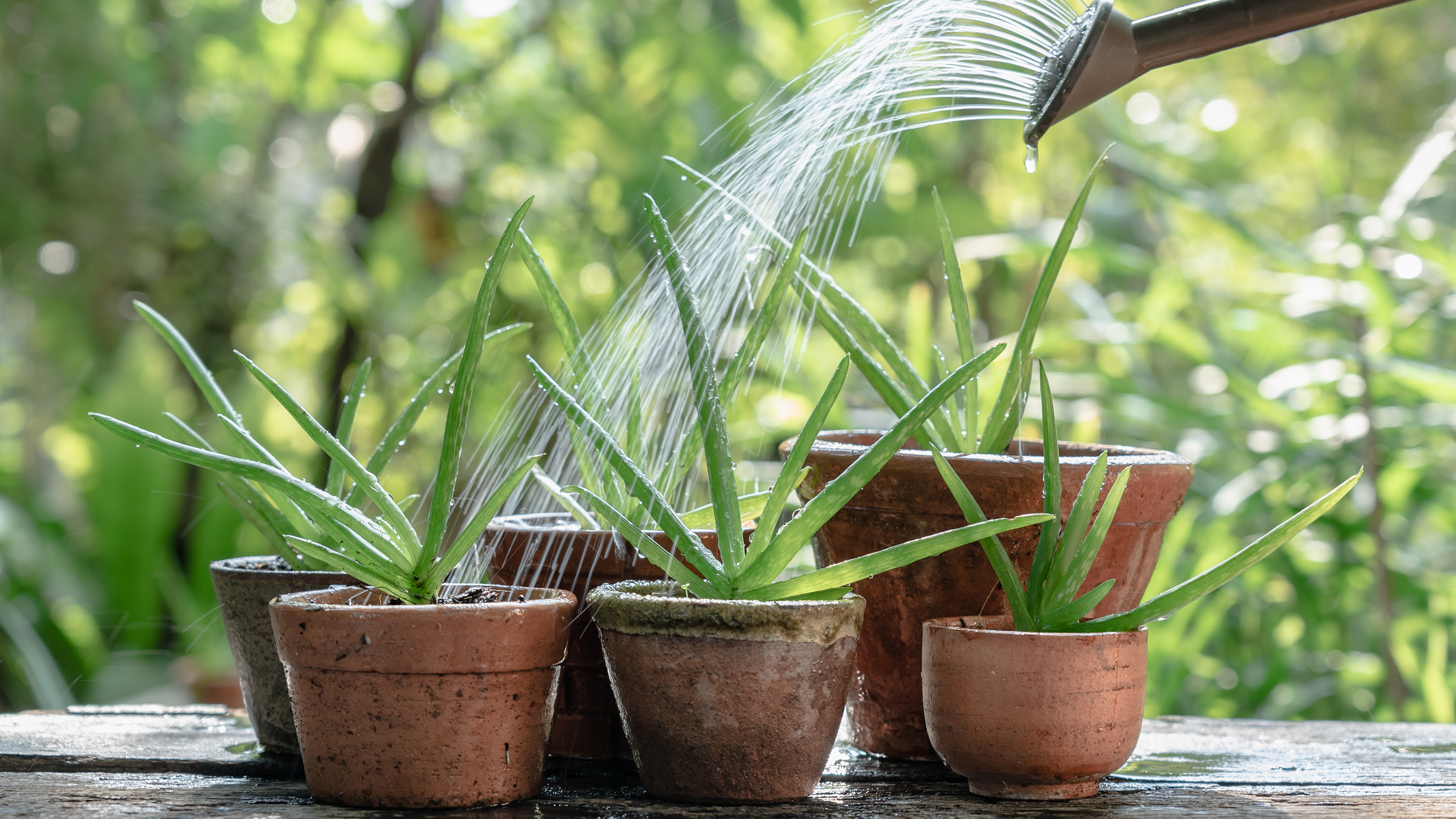

Amy Draiss
How often to water an aloe vera plant is a common concern. Though it is a succulent that grows in dry regions, the plant is not entirely drought tolerant.
Achieving the right watering balance is an important part of aloe vera plant care. Too much moisture will drown the roots, causing rot and eventually plant death.
When underwatered, aloe will express its displeasure through puckered, wilting leaves and slowed growth.
In addition, it will not be able to produce any sap – which is prized for its healing properties.
Yet, with a little love and enough moisture, aloe vera can live up to 100 years and grow to 3 feet (1m) in height.
There are many different types of aloe vera that are kept as houseplants, and in warmer USDA zones you can grow aloe outdoors. However, the plants' watering needs are broadly the same.
So, just how often do you water aloe vera and what is the best method? Here are some tips on how to keep a happy plant.
Gardening tips, videos, info and more delivered right to your inbox!
Sign up for the Gardening Know How newsletter today and receive a free copy of our e-book "How to Grow Delicious Tomatoes".
How Often To Water An Aloe Vera Plant
How often to water aloe should be based on need rather than a set schedule. A hands-on approach is warranted if you want to keep those glorious sword-like leaves thick and healthy while preventing root damage.
It's important to manually check that the soil is dry, since overwatering can encourage a variety of fungal diseases that could kill the plant.
To do this, every couple of days, push your finger in the soil down to the second knuckle. If the top 3-4 inches (8-10cm) of soil is dry, then it’s time to water.
On average, aloe vera plants will need to be watered once a week.
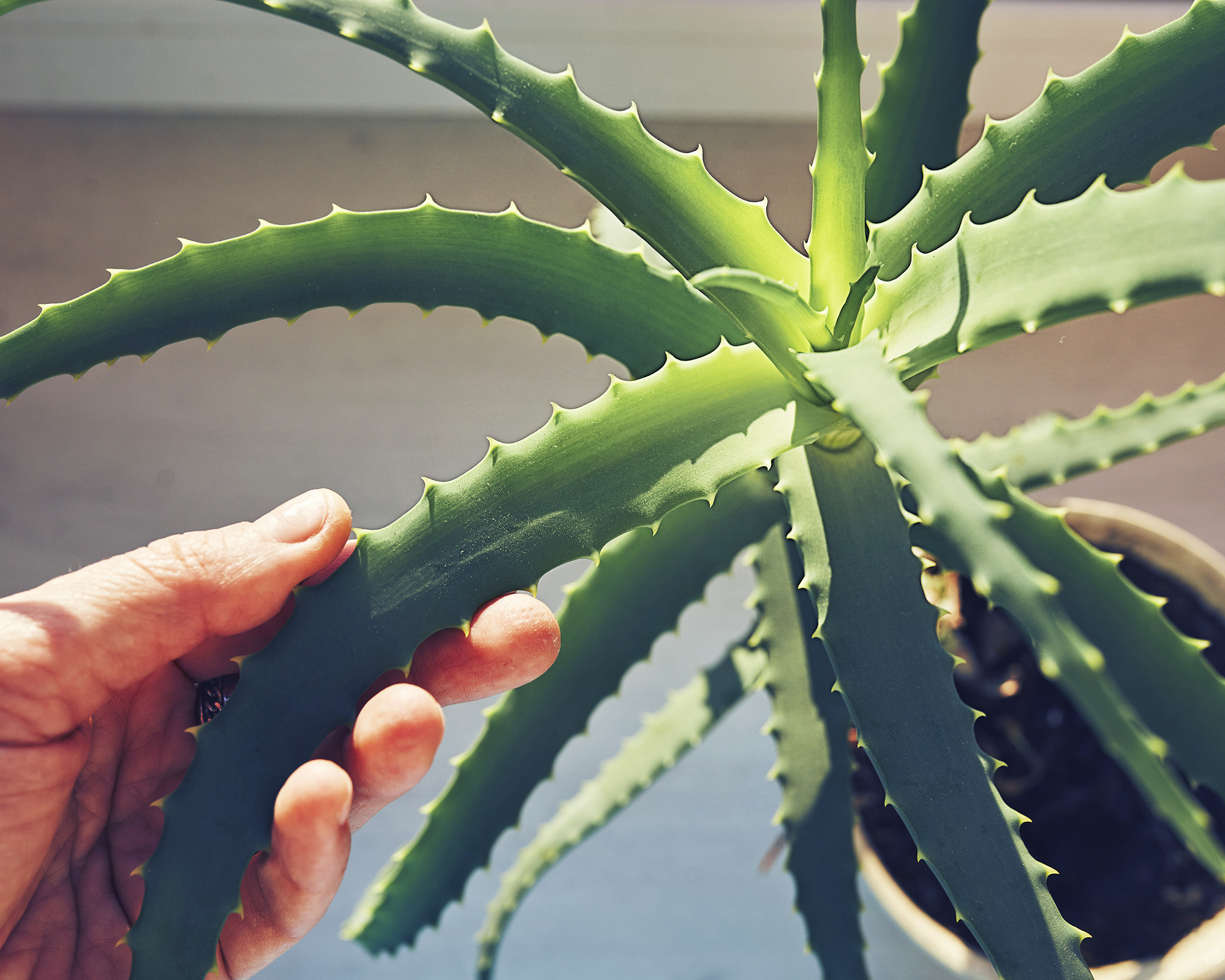
How Often To Water Aloe In Winter
Aloe goes into a sort of hibernating state in the cold season, when it is not actively growing.
In the fall and especially winter, the plant needs very little water. Give it a drink about half the time you did in the growing months.
Make sure the plant is never sitting in a saucer of water, no matter what time of year.
How To Water Aloe Vera
Aloe vera should be watered deeply, and the moisture should be allowed to drain through before it is returned to its outer pot or water tray.
Watering an aloe deeply also allows any salt build-up to leach from the soil. Succulents can be sensitive to the minerals and chemicals in municipal water supplies. If your aloe seems peaky, use filtered or distilled water when irrigating.
Add a diluted liquid fertilizer once per month to the water, but only during the growing season.

Do You Water Aloe Vera From Top Or Bottom?
There is some debate as to whether aloe vera should be watered from the top or bottom, but if done correctly either method is fine.
The school of thought on watering from the bottom is that this will only moisten the roots where the water needs to go. This may keep the rest of the soil from being too wet.
However, if you water from the top and avoid getting the leaves wet then you don’t need to worry.
Planting succulents in unglazed clay pots will also allow excess moisture to evaporate more easily than a ceramic or other glazed container.
Tips To Avoid Overwatering
- Perfect watering techniques start with a well-draining medium. A succulent mixture works best, or cactus soil with some regular soil mixed into it.
- Make sure the drainage holes in any container are open and plentiful. You may also want to place small gravel or pebbles in the bottom 2 inches (5cm) of the container, especially if the pot is tall.
- In most homes, central heating will help dry the air, but in older homes it can be quite moist inside. A humid home will transfer moisture to the plant, meaning you don’t have to water as frequently as a dryer home.
- The time of year is another factor. Spring and summer will see you watering much more frequently than winter.
- Outdoor plants may need more frequent irrigation than indoor aloes, since direct sun exposure and wind will dry the soil quickly.
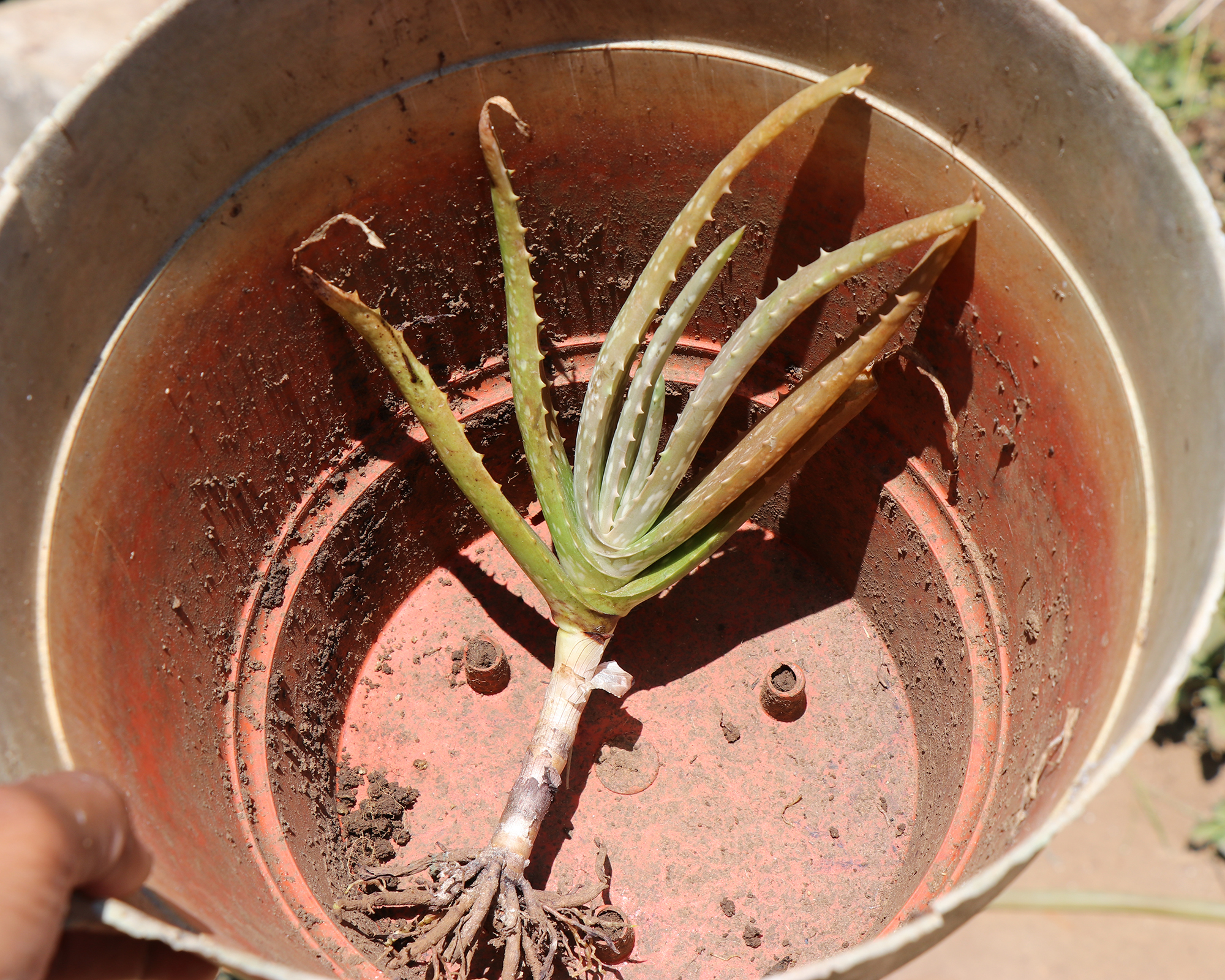
Overwatered Aloe Vera Plant Care
If your aloe vera plant has been overwatered, remove it from the soggy soil and let it dry out for a day or two. Check the roots for signs of rot and cut off any discolored or mushy parts.
The roots also need to be checked for any signs of fungal disease and trimmed if any is discovered.
Aloe vera are practically foolproof plants that can survive most errors in irrigation. So you should be able to save your aloe vera plant if you replant it in good, dry succulent soil. Do not water your newly planted aloe for a week.
Frequently Asked Questions
How do I know if my aloe plant needs water?
When in doubt, purchase a soil meter. These are very easy to use and modern devices will allow you to program in the type of plant for an accurate reading.
The plant will also give visual cues if it is water starved. The smooth, gently serrated skin on the leaves will pucker and wrinkle. In severe cases, the leaves will dry and fall off.
Keep a good watch on the plant and try to never let it get that stressed. Stressed plants are prey to many insects and diseases that they might withstand if their care has been consistent and proper.
What does an overwatered aloe plant look like?
Overwatering is a common cause of aloe decline. The first signs are leaf discoloration, yellowing and browning. Blistered cells in the leaves are a sign of edema where too much water has been absorbed. The leaves may feel squishy or even pull right away from the plant.
A droopy aloe plant, mold in the soil and any softening of the stems also indicate too much moisture.
If you get your nose in by the crown you may smell an off odor.

Bonnie Grant is a professional landscaper with a Certification in Urban Gardening. She has been gardening and writing for 15 years. A former professional chef, she has a passion for edible landscaping.
- Amy DraissDigital Community Manager
-
 Looking For Plants To Give You The Soft And Fuzzies? Try These 5 Fuzzy Leaf Plant Options
Looking For Plants To Give You The Soft And Fuzzies? Try These 5 Fuzzy Leaf Plant OptionsLovers of texture, drama, silver foliage and tactile plants will adore these special sensory garden additions. These fuzzy leaf plant options will leave you all aglow
By Susan Albert
-
 Get Ready For A Summer Of Hummers! Grow These Full Sun Hummingbird Plants and Flowers
Get Ready For A Summer Of Hummers! Grow These Full Sun Hummingbird Plants and FlowersIf you’re lucky enough to enjoy a sunny backyard, make sure you are maxing out on your pollinator opportunities and grow these full sun hummingbird plants and flowers
By Tonya Barnett
-
 Best Spider Plant Soil – Complete Soil Guide And Expert Tips For Keeping Plants Happy
Best Spider Plant Soil – Complete Soil Guide And Expert Tips For Keeping Plants HappySpider plants are fun and easy plants to grow, but what is the best soil for a spider plant? Selecting the right soil is important so they can thrive.
By Bonnie L. Grant
-
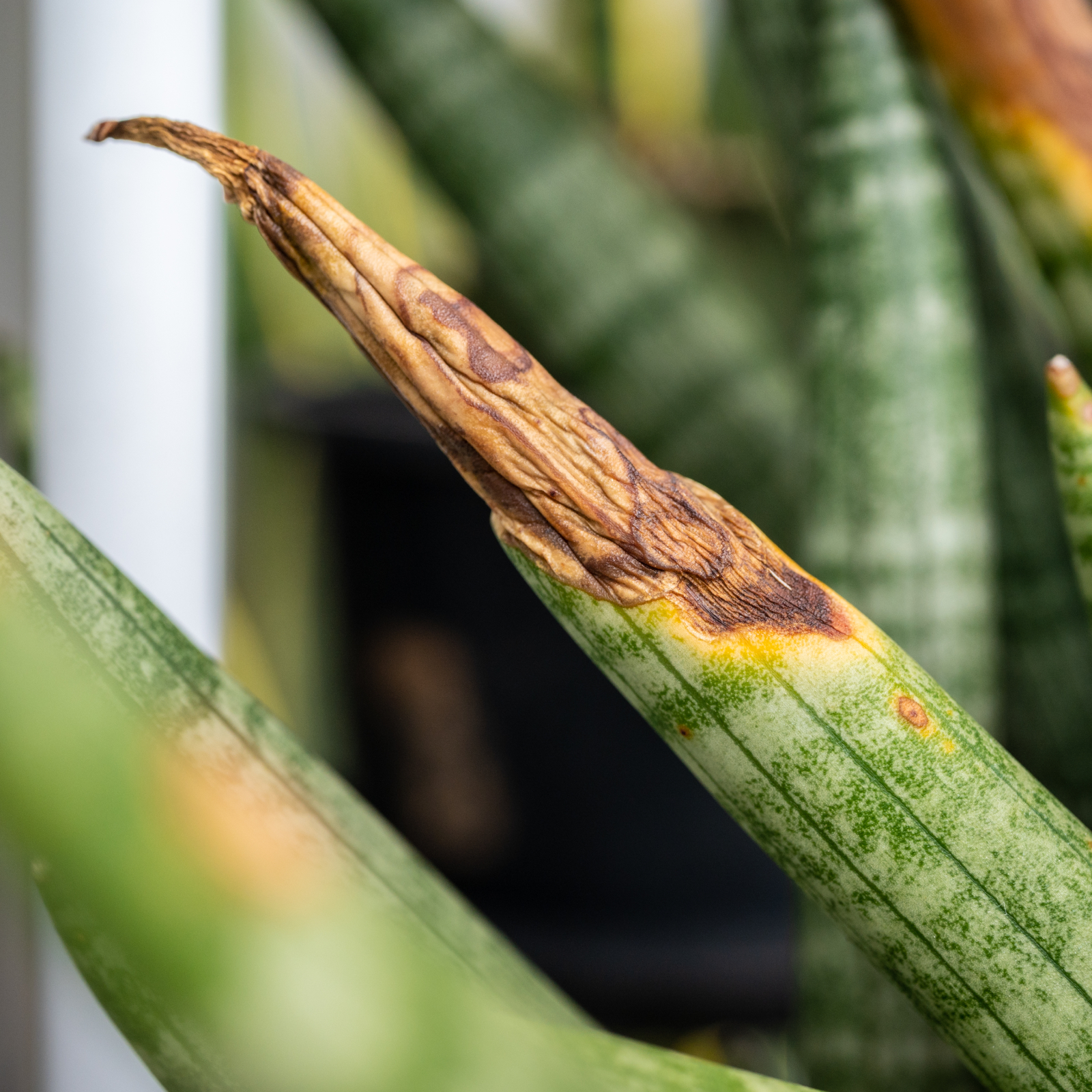 Help, My Snake Plant Is Mushy! Advice For Root Rot In Snake Plants
Help, My Snake Plant Is Mushy! Advice For Root Rot In Snake PlantsSnake plants are hardy houseplants, but they can be susceptible to root rot. Learn how to prevent and treat this common snake plant problem.
By Amy Grant
-
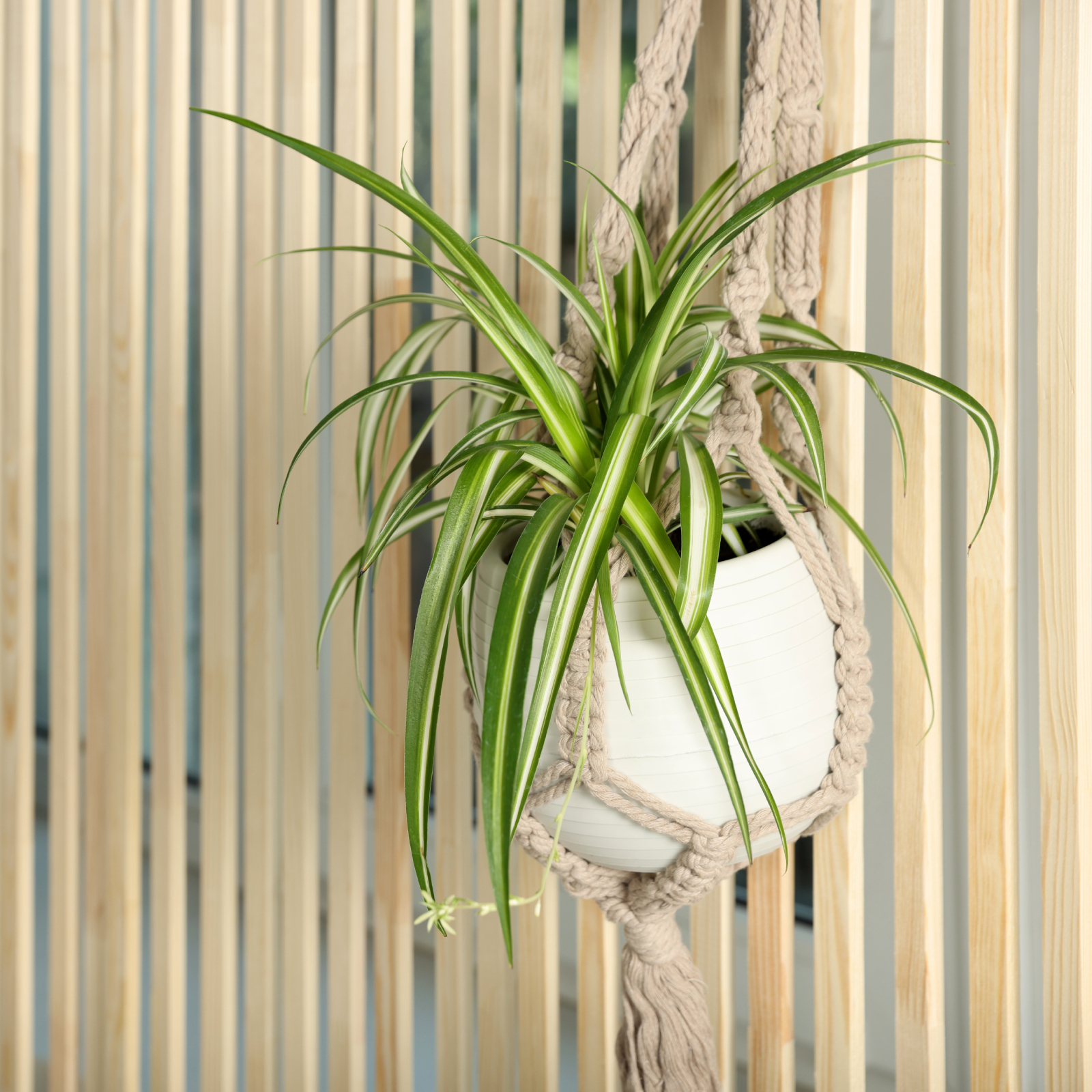 How To Grow A Hanging Spider Plant – For An Elegant Indoor Or Outdoor Display
How To Grow A Hanging Spider Plant – For An Elegant Indoor Or Outdoor DisplayOf all the beautiful baskets we see, the hanging spider plant is probably the easiest to grow. Let your hanging basket spill over with little spider plantlets!
By Teo Spengler
-
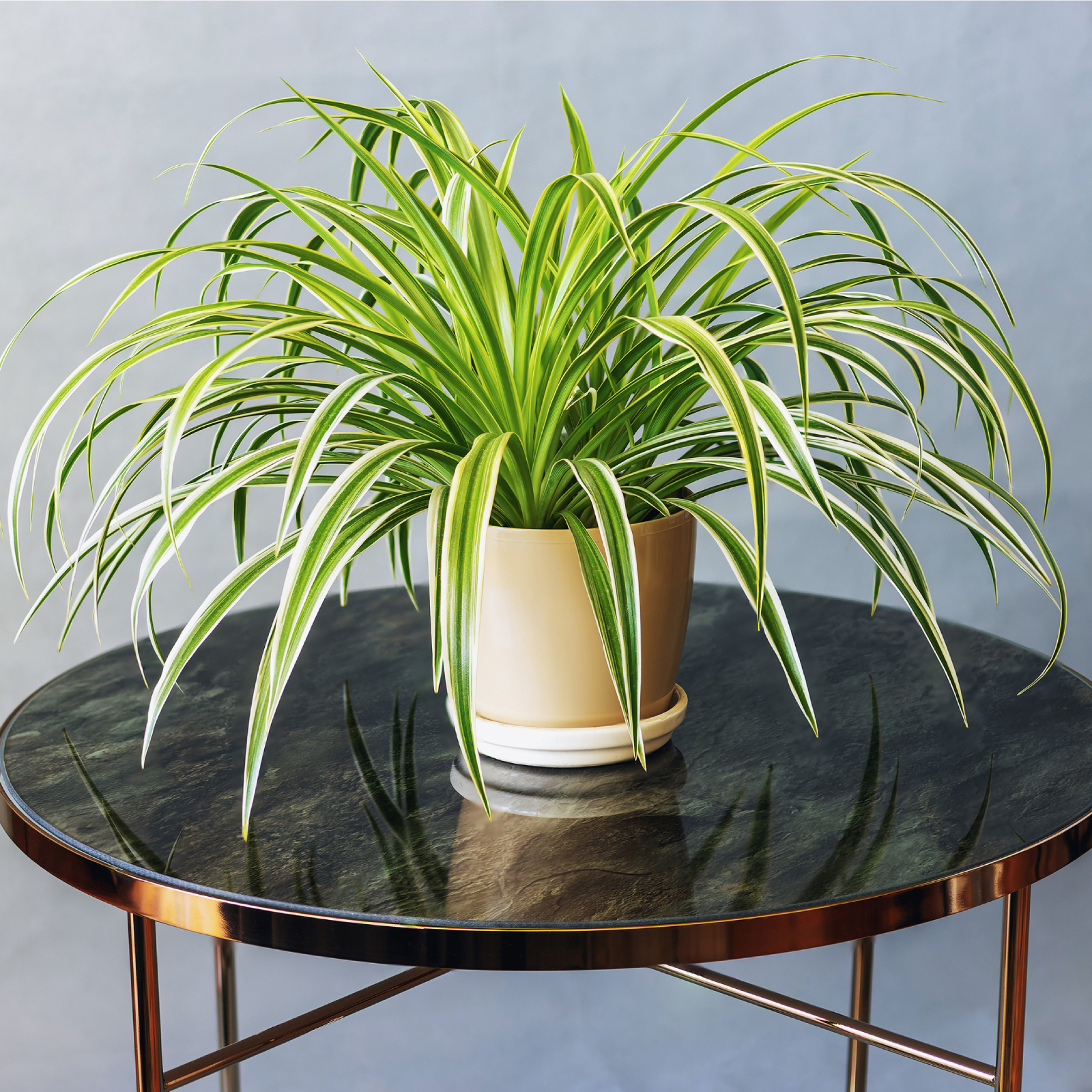 How To Care For A Variegated Spider Plant – Plus, Unique Varieties To Try
How To Care For A Variegated Spider Plant – Plus, Unique Varieties To TryVariegated spider plants and their streaks of green and cream tones bring interest and light to an indoor room, and will elevate your houseplant collection.
By Teo Spengler
-
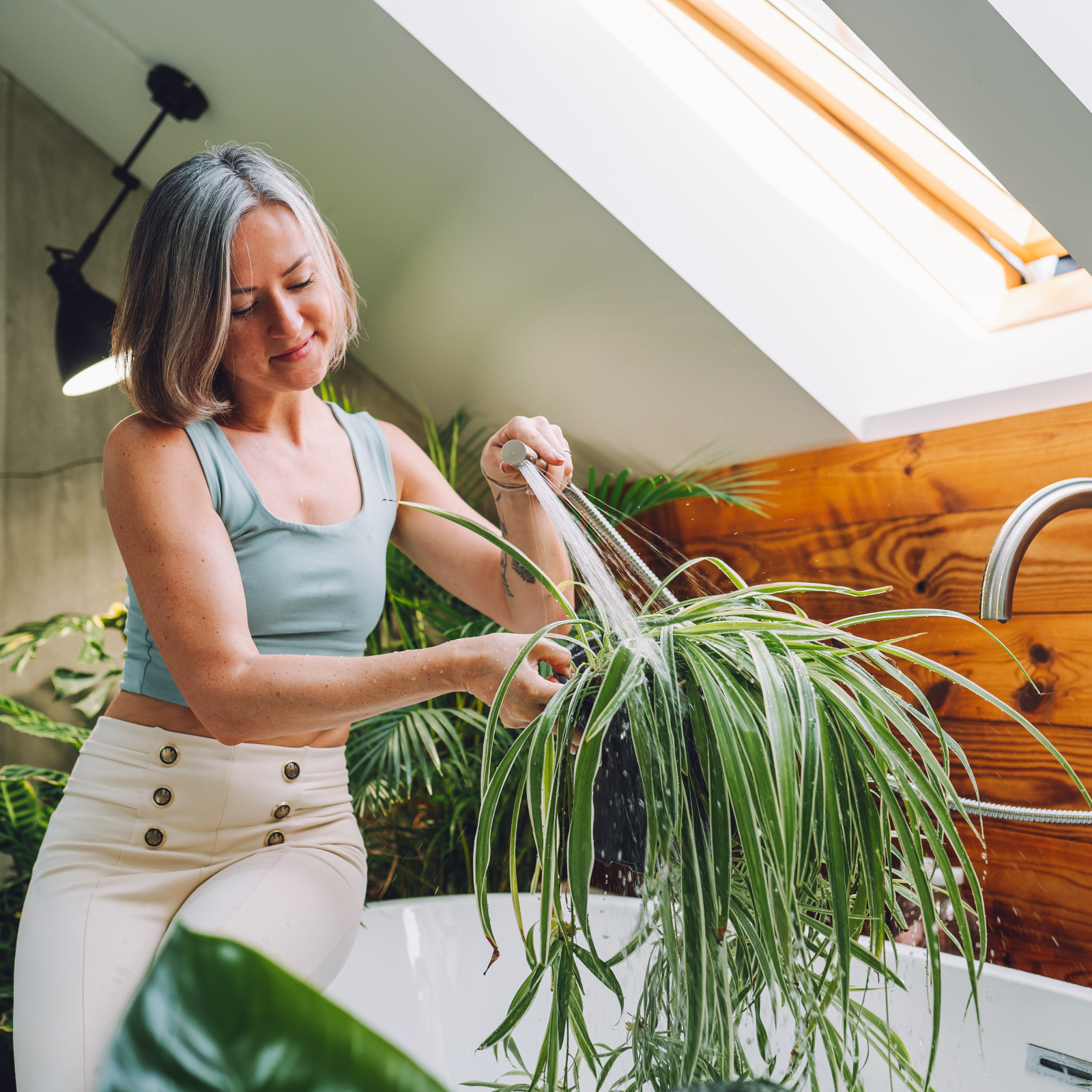 How Often Should You Water A Spider Plant? Tips To Keep Spider Plants Happy And Healthy
How Often Should You Water A Spider Plant? Tips To Keep Spider Plants Happy And HealthySpider plants are hardy and easy to grow, but they do need proper watering to thrive. Read our tips on how often to water your spider plants.
By Amy Grant
-
 Snake Plant Getting Enough Light? Understanding Light Requirements And How To Adjust
Snake Plant Getting Enough Light? Understanding Light Requirements And How To AdjustSnake plant light requirements aren’t as stringent as for some houseplants, but the right lighting is important for their growth and well-being.
By Tonya Barnett
-
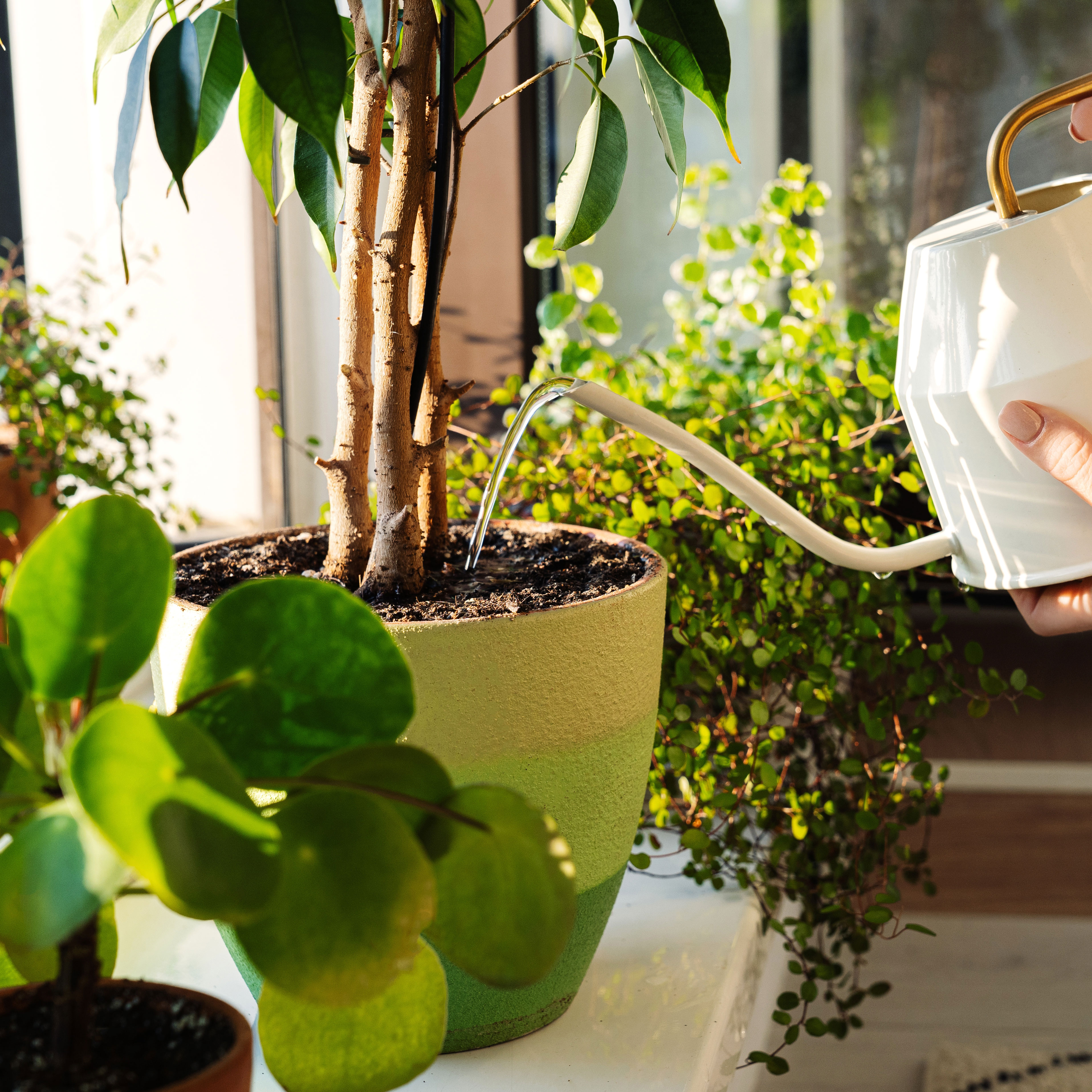 Feeding Houseplants: How And When To Fertilize Indoor Plants Like A Pro!
Feeding Houseplants: How And When To Fertilize Indoor Plants Like A Pro!Container-based houseplants have specific feeding needs over and above plants grown in the ground. Here’s how and when to fertilize indoor plants the right way
By Bonnie L. Grant
-
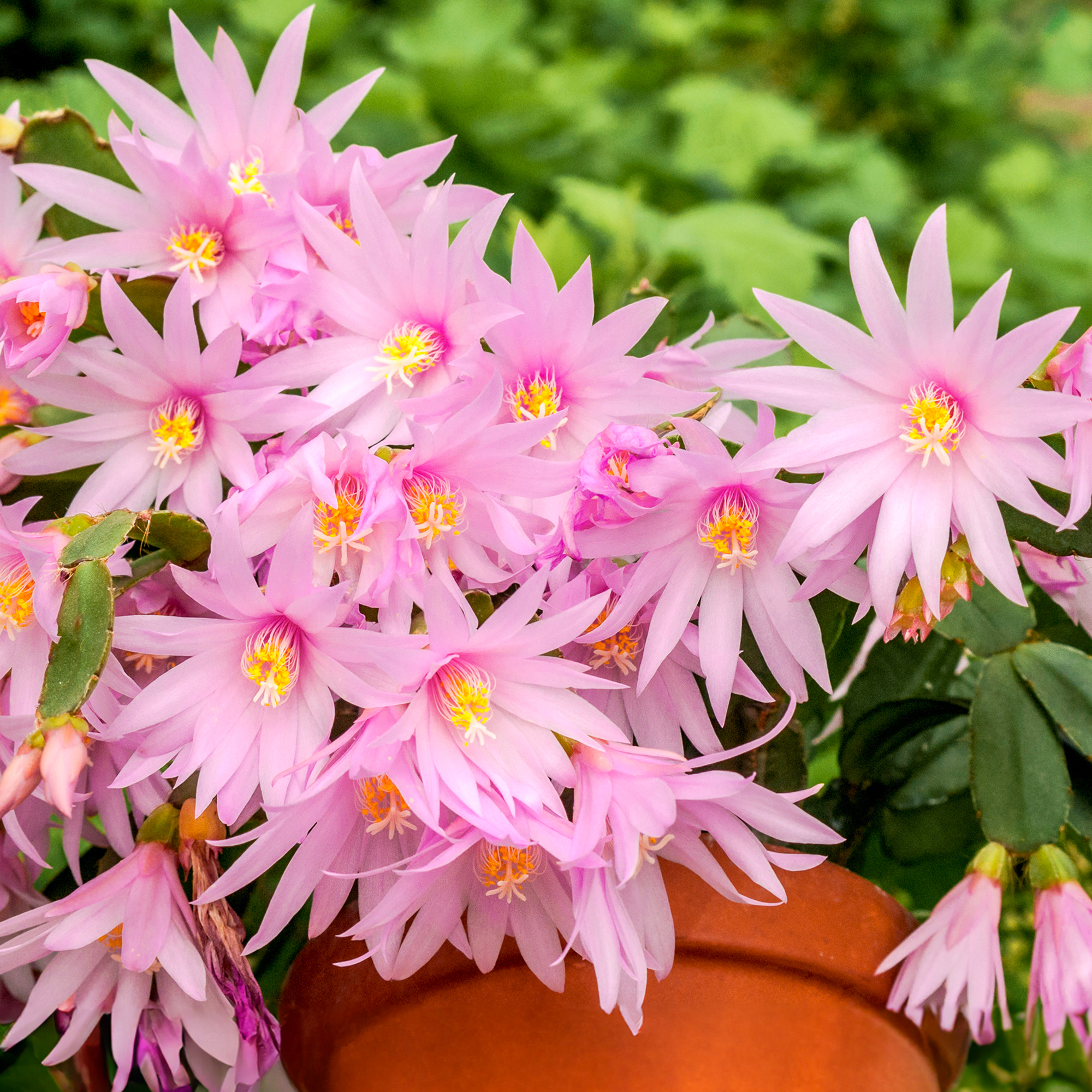 How To Get An Easter Cactus To Bloom Every Year: Expert Tips For Stunning Spring Flowers
How To Get An Easter Cactus To Bloom Every Year: Expert Tips For Stunning Spring FlowersDiscover the secrets to vibrant Easter cactus flowers and follow these key steps to ensure spectacular blooms just in time for spring.
By Melanie Griffiths